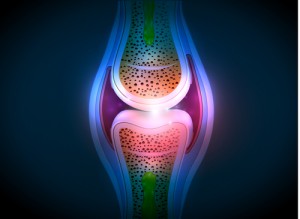Pigmented Villonodular Synovitis or PVNS is a condition that causes the synovium to thicken and overgrown. This thin layer of tissue is located internally between the joints and tendons. Inside a healthy, unaffected joint, the synovium is responsible for excreting a minimal amount of fluid to lubricate the cartilage. This improves movement and rotation for the joint. When the synovium produces larger quantities of fluid, it tends to make the joint swell and decrease movement.
Luckily, the benign mass or tumor associated with PVNS does not spread to other areas of the body. Besides pain and restricted movement, this joint condition is a progressive disorder that may lead to bone damage or arthritis.
Eighty percent of all PVNS patients have this disorder in their knees. The other percentage tends to affect young adults in their 30s and 40s inside the hip, ankle, shoulder or elbow joints. Many cases of PVNS are unknown, but genetic changes have been hypothesized. 
There are two types of PVNS: Localized and diffused. When one area of the joint or tendon is affected by the tumor, this is identified as localized PVNS. A diffused case involves the entire joint. Unfortunately, a case of diffused PVNS is more difficult to treat because it involves the entire area.
This condition causes exaggerated amounts of swelling in the affected joint, as well as stiffness and pain. While a physician should conduct a physical exam, other diagnostic tests including xrays, MRIs, joint aspirations and biopsies are great ways to identify PVNS. Joint aspirations that reveal bloody joint fluid are a good indicator for PVNS.
Treatment Options for Pigmented Villonodular Synovitis PVNS
While this is an advanced and sometimes debilitating condition, there are many available treatment options. There are surgical options that include: arthroscopies, open surgery, total joint replacement or a combination of arthroscopies and open surgery. These treatments are all invasive and work towards removing the mass to improve the joint lining. Radiation has also been used to shrink the tumors that can become widespread, diffused PVNS cases.
The recovery time depends on the selected treatment option. Physical therapy is often recommended to regain strength and improve range of motion after treatment for PVNS. The recovery goal is to improve movement and get the patient back to his or her daily activities as soon as possible.
While PVNS is not a life-threatening condition, it can become extremely painful and even debilitating for some people. If you have severe joint pain and swelling, schedule an appointment with your physician to rule out any possible issues and begin the necessary treatment.

Recent Comments